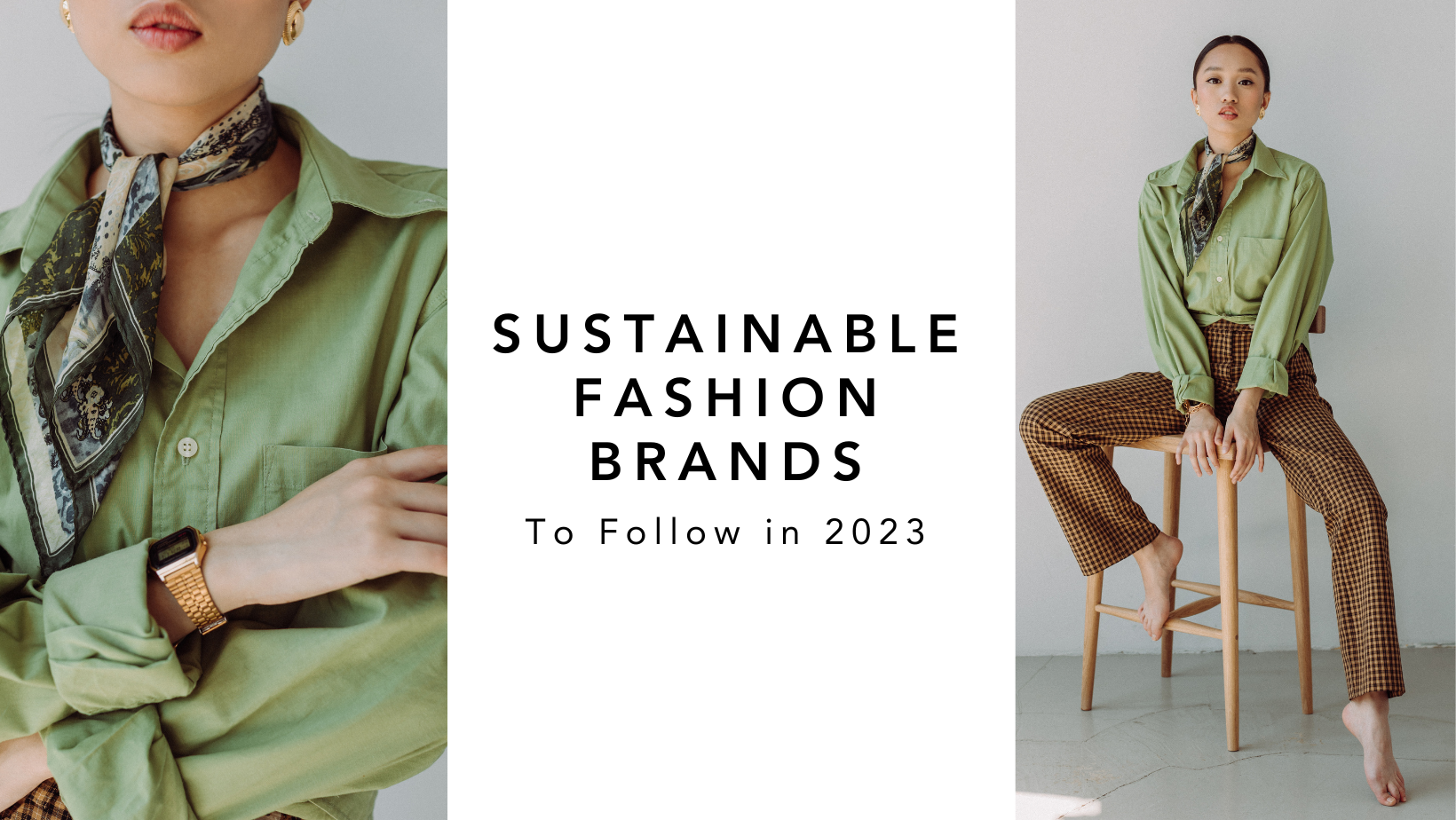Exploring the Surge of Cape Town Sustainable Fashion Brands
Exploring the Surge of Cape Town Sustainable Fashion Brands
Blog Article
Stay Ahead of the Curve by Checking Out Cutting-edge Fashion Patterns
In a sector as dynamic as fashion, remaining ahead involves more than just complying with current fads-- it requires an expedition of development. The merging of technology and fashion declares a brand-new age of customer engagement.

Welcoming Smart Textiles
Over the last few years, the fashion business has experienced a transformative shift with the assimilation of smart fabrics, a cutting-edge advancement that blends modern technology with textile. This development stands for not only a combination of visual appeals and functionality however likewise a substantial leap towards sustainability and customization in vogue. Smart fabrics, likewise referred to as e-textiles, installed innovative electronics such as sensors and conductive strings within the material, making it possible for garments to engage with the environment or the user.
These textiles are made to monitor physical parameters, such as heart price or body temperature, offering real-time health analytics. Past health applications, clever textiles are also being used for flexible garments, which can transform shade or pattern in reaction to environmental stimuli, therefore using a dynamic fashion experience.
Moreover, the growth of energy-harvesting fabrics that produce power from motion or sunlight is paving the method for self-sufficient wearable innovation. This development is attracting environmentally mindful customers and designers intending to reduce the eco-friendly footprint of fashion. As research study and growth in this field breakthrough, clever textiles are expected to come to be increasingly prevalent, improving the landscape of modern-day fashion with their multifunctional capabilities.
The Rise of 3D Printing
Changing the manufacturing landscape, 3D printing has become a game-changer in the fashion market. This sophisticated technology has allowed developers to push the boundaries of creativity, producing detailed and customized garments that were previously unbelievable. By leveraging electronic layout and additive manufacturing, 3D printing facilitates the development of complicated geometries and patterns, permitting designers to try out new appearances and structures.
A remarkable benefit of 3D printing in fashion is its ability to produce on-demand, lessening waste and minimizing stock needs. This efficiency not only optimizes manufacturing procedures however additionally allows for quick prototyping, making it possible for developers to bring their visions to life in a shorter duration. Moreover, 3D printing sustains modification somewhat unparalleled by standard methods, providing personalized fits and one-of-a-kind styles tailored to private customer preferences.
The increase of 3D printing has likewise democratized fashion, making it obtainable to emerging designers who can currently fabricate high-quality pieces without significant monetary investment in typical production infrastructure. As innovation proceeds to development, the apparel industry is poised to harness the full capacity of 3D printing, checking out new products and methods that will most certainly redefine how fashion is developed and created.
Lasting Style Innovations
As the fashion business faces journalism requirement for environmental obligation, lasting style developments have emerged at the leading edge of transformative change. The expanding awareness of ecological effect has actually fueled a change in the direction of more eco-conscious practices and materials. Brands and designers are currently prioritizing sustainability, including techniques that minimize waste and minimize carbon footprints.
One significant growth is the surge of round fashion, which stresses recycling and upcycling to extend the lifecycle of garments. This approach not just lowers waste yet also motivates consumers to adopt a much more mindful approach to apparel usage.
Another advancement depends on the adoption of cutting-edge dyeing methods that utilize waterless processes or all-natural dyes, thus minimizing the large quantities of water and chemicals traditionally used in textile dyeing. Additionally, improvements in biotechnology have resulted in the creation of lab-grown natural leather and fabrics, supplying environmentally pleasant and cruelty-free choices to standard products. With these introducing initiatives, the garment industry is making significant strides in the direction of a more lasting future.

Tech-Integrated Clothing
Tech-integrated clothing stands for a cutting-edge blend of fashion and technology, improving just how individuals engage with their clothes. This innovative domain is noted by the inclusion of wise fabrics and embedded digital elements, improving both functionality and visual allure. From fitness trackers installed in sports apparel to warmed coats managed via smart device applications, tech-integrated clothing provides customers extraordinary comfort and adaptability.
Pioneering brand names are driving this fad, concentrating on producing garments that react to ecological stimuli or user commands. As an example, some garments can alter shade or pattern in response to temperature level changes, while others incorporate biometric sensors to check health and wellness metrics like heart rate or tension levels. The seamless combination of innovation right into fabrics additionally reaches ecological sustainability, with efforts to create self-cleaning fabrics or garments that get used to weather problems, thus minimizing the need for several layers.
In addition, the advent of wearable modern technology is not simply limited to clothing but prolongs to devices like watches and eyewear, more widening the scope of tech-integrated fashion. As the industry proceeds to innovate, the potential for personalization and personalization in garments grows, offering consumers unique, tech-enhanced style experiences that satisfy their individual needs and preferences.
Future of Virtual Fashion
In the last few years, the future of virtual fashion has actually arised as a transformative force within the sector, leveraging developments in electronic innovation to redefine just how style is produced, experienced, and consumed. By integrating augmented truth (AR), digital fact (VIRTUAL REALITY), and 3D layout devices, designers can now craft immersive and interactive experiences that go beyond traditional fashion borders. Online fashion permits the production of garments that exist entirely in electronic atmospheres, providing additional resources countless opportunities for technology without the limitations of physical production.
This electronic change not only provides opportunities for imaginative expression however also addresses sustainability concerns inherent in standard fashion techniques. Cape Town Sustainable Fashion. By getting rid of the need for navigate to this website physical resources, online fashion lowers waste and decreases carbon footprints. Moreover, the rise of digital fashion aligns with the increasing customer demand for customized and distinct experiences, as online garments can be customized and tailored to private preferences effortlessly

Conclusion
The fashion industry's future lies in the combination of lasting practices and ingenious technologies. Virtual style is positioned to redefine customer interactions.
In recent years, the fashion industry has actually observed a transformative shift with the combination of smart textiles, a cutting-edge development that blends modern technology with textile.As the style sector grapples with the pressing need for ecological responsibility, lasting fashion innovations have arised at the why not find out more forefront of transformative change.In recent years, the future of digital fashion has emerged as a transformative force within the market, leveraging advancements in electronic innovation to redefine exactly how fashion is created, experienced, and taken in. The increase of virtual fashion aligns with the boosting consumer need for special and individualized experiences, as online garments can be tailored and customized to individual choices with convenience.
The style market's future lies in the combination of sustainable techniques and innovative modern technologies.
Report this page